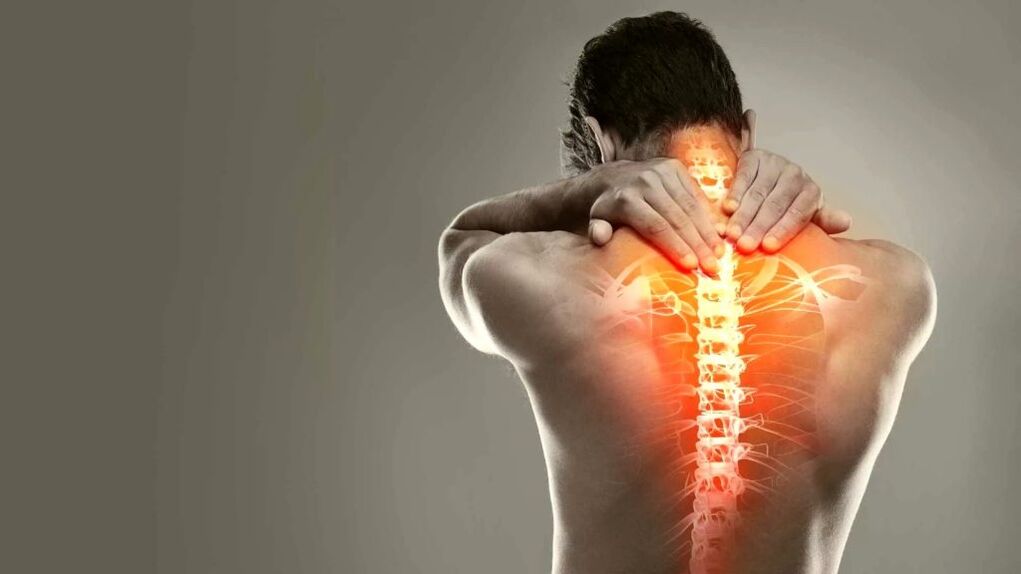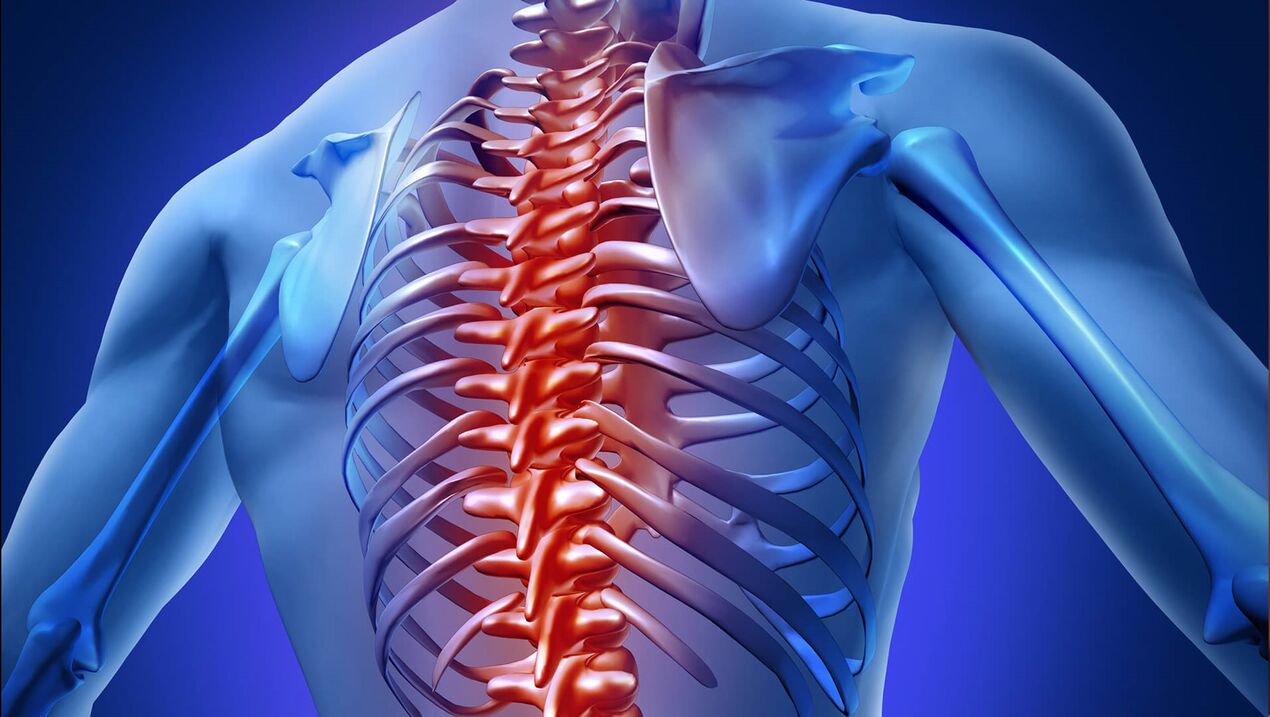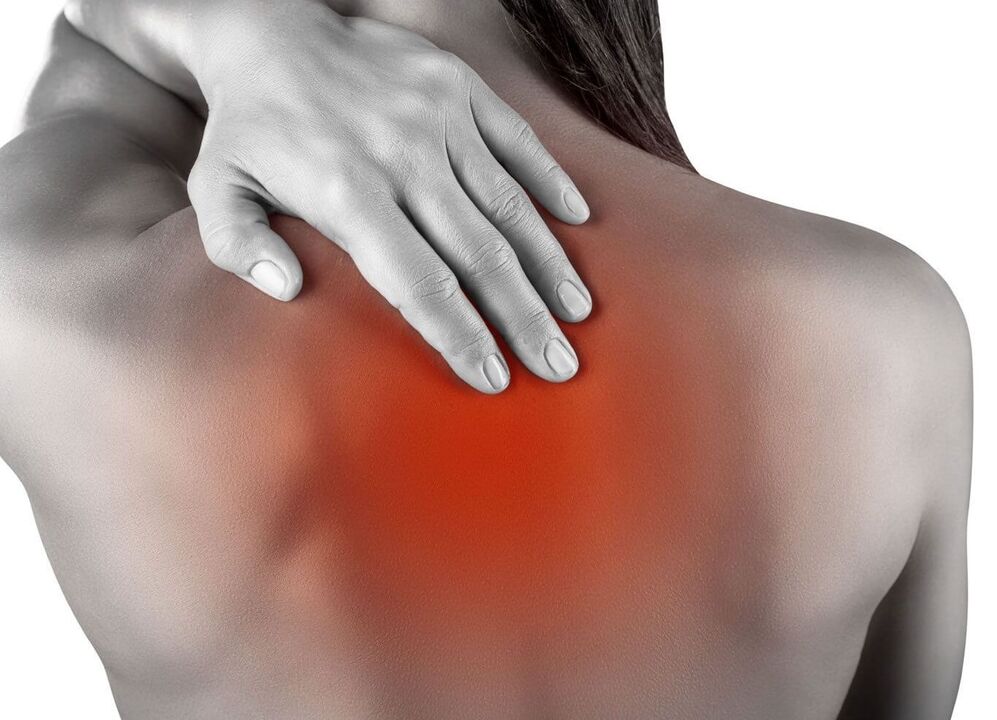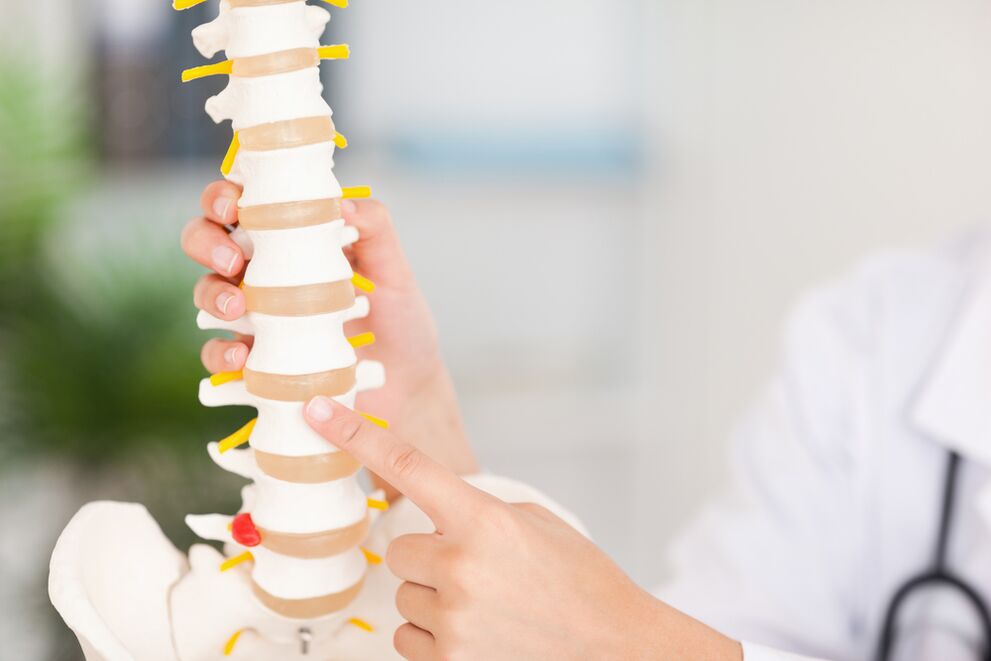
Osteochondrosis - dystrophic and degenerative changes in cartilage and bone tissue. Osteochondrosis of the spine can occur in the cervical, thoracic or lumbar spine. Progression of the disease leads to destruction of ligaments, joint structure, intervertebral discs.
Spinal osteochondrosis in the chest region is not common. This is due to the peculiarities of its structure. Its mobility is lower than that of the cervical and lumbar regions. Part of the load is taken from the ribs and sternum. The risk of pathology in the difficulty of diagnosing it. The symptomatology is similar to other diseases, it is detected quite late, which complicates the treatment process.
Causes of the disease

The development of thoracic osteochondrosis is associated with metabolic disorders and increased load on the intervertebral discs. Inside the intervertebral disc is the nucleus pulposus, which is surrounded by the annulus fibrosus. If damaged, drying and loss of damping qualities of the core occurs. As a result of degenerative processes, inflammation and constriction of the nerve fibers of the spinal cord occur.
Causes of osteochondrosis can be:
- inheritance;
- intervertebral hernia;
- presence of osteophytes;
- poor blood supply to the spinal cord due to constriction of blood vessels;
- violation of mineral metabolism (in particular, calcium deficiency);
- curvature of the spine, which creates an uneven load on the discs;
- trauma to the chest region due to a fall, bruising, stroke;
- strength sports, regular weight lifting;
- passive lifestyle.
Symptoms and sensations with osteochondrosis of the chest
Several factors affect the clinical picture of the pathology:
- level of spinal cord injury;
- patient's age;
- stage of the pathological process (worsening or remission).
The symptoms of chest osteochondrosis are characterized by variety and nonspecificity, so the disease is often confused with other pathologies.
The main signs of breast osteochondrosis:
- Dorsago - a sharp, sudden pain in the chest and back ("chest lumbago"), the patient feels shortness of breath.
- Dorsalgia is small pain in the affected vertebrae that develops gradually over several weeks. The pain may increase with deep breathing, bending sideways and forward, as well as with prolonged standing in a static position.
The sensation of severe girdle pain and breathing problems are associated with intercostal neuralgia, in which the nerve roots are compressed. The intensity of the pain usually increases in the afternoon and decreases after a good night's sleep.
Among the neurological symptoms are:
- violation of limb sensitivity;
- numbness of the heart muscle;
- pulmonary syndromes;
- tingling, burning, numbness of the skin;
- muscle tremors and spasms;
- a feeling of the presence of a foreign object in the pharynx when osteochondrosis is localized in the upper chest segment.
Intercostal neuralgia is an accompanying symptom of degenerative-inflammatory pathologies of the spine (osteochondrosis, vertebral displacement, scoliosis). But its appearance resembles the signs of various diseases of the peritoneal organs and the thoracic region.
Note!Often, the pain appears in the upper areas of the chest region, gradually covering it completely, as well as in the area of the shoulder blades (reminiscent of angina pectoris). Pain in the right hypochondrium occurs with osteochondrosis of the lumbar region of the chest. They can be diagnosed as pancreatitis or cholecystitis. Pain in the gastrointestinal tract appears with lesions of the lower segment of the thoracic region of the spine, mimicking intestinal disease.
Stages of disease development

The degree of development of the disease is associated with pathological disorders of the spine, which are characterized by certain clinical symptoms.
There are 4 periods of disease development:
- degree of 1- the appearance of cracks inside the fibrous ring, after which the pulposus nucleus fluid penetrates into it. A pain syndrome appears, localized only in the affected area. There may be pain in the heart muscle area, muscle cramps.
- 2nd degree- abnormal mobility between the vertebrae appears, subluxations are visible in the chest region. With prolonged static posture or during movement, increased discomfort and pain are felt.
- Class 3rupture of the annulus fibrosus, extending beyond the pulposus nucleus. The formation of intervertebral hernias occurs. This causes severe back pain, impaired mobility and other symptoms.
- 4 degrees- pathological processes extend beyond the spine. Degenerative-dystrophic changes include paravertebral ligaments, fibrosis develops.
Diagnosing
The radiograph is very informative. The presence of pathology is indicated by:
- uneven edges of the disc;
- magnification and sharpening of uncinate processes;
- reduction in the height of the discs, deformation of their shape;
- the presence of osteophytes.
Sometimes an X-ray contrast study is performed. The contrast agent fills the ruptured disc, which makes it possible to determine the degree of neglect of the pathological process. MRI and computed tomography are considered no less informative.
Effective treatments
How to treat osteochondrosis of the chest region? The approach to therapy should be comprehensive. It is necessary to take into account the stage of development of the disease, the degree of destructive processes, the general condition of the patient.
Drug therapy
In the treatment of osteochondrosis of the chest, several groups of drugs are used.
- NSAIDs and muscle relaxants;
- Glucocorticosteroids. Their therapeutic effect is more pronounced than that of NSAIDs, but the risk of side effects is higher.
- Chondroprotectors. Chondroprotective agents are believed to contribute to the repair of damaged cartilage tissue. But their effectiveness has not been conclusively confirmed.
- Diuretics are used for a short time to relieve swelling of the choked nerve fibers during a worsening of osteochondrosis.
Folk remedies and recipes

It is most often used during the remission period of the disease and only as an additional method of treatment.
Treatment of osteochondrosis at home using traditional medicine:
- Add 30-40 g of chopped celery root with 1 liter of boiling water. Insist 8 hours. Drink 1 tablespoon three times a day.
- Melt steam 150 g of lard. Add 2 tablespoons of wax to it. Heat for 15 minutes. Add 1 tablespoon of ammonia. Massage the problem areas twice a day. Store in a cool place.
Massage and exercise therapy
One of the most effective therapeutic measures for osteochondrosis is massage. Helps eliminate muscle spasm, improve blood supply to the problem area and normalize the functional state of the spine. With an exacerbation of the disease, vibrating massage is recommended. After mitigating the clinical manifestations, you can do a classic massage course.
Massage is not recommended for grade 3 thoracic osteochondrosis when there is an intervertebral hernia. This may worsen the patient's condition.
The purpose of physical therapy and gymnastics for osteochondrosis is to improve the mobility of intervertebral joints, strengthen the muscular body. Exercise therapy allows you to relieve muscle spasms, remove stiffness in the back. Classes should be conducted daily under the supervision of an experienced instructor. Their plan is done individually for each patient.
Power characteristics
The main principles of proper nutrition in the treatment of osteochondrosis of the chest:
- a large amount of protein in the diet;
- exclusion of fat and fried;
- food must be boiled or baked.
Salt should be excluded from the diet or should be significantly limited. Avoid carbonated and caffeinated beverages. It is better to replace them with herbal teas, natural juices. To improve the synthesis of cartilage tissue, it is useful to include in the diet jelly, jelly, jelly, which contain chondroitin. To get enough calcium for bone health, you need to eat dairy products. Compliance with proper nutrition prevents the progression of the pathological process.
Preventive measures
To prevent the development and worsening of destructive processes in the thoracic spine, it is recommended to take preventive measures as soon as possible and follow them regularly.

Recommendations:
- do special exercises for the back every day;
- give up addictions;
- eat properly and balanced;
- weight normalization;
- with work sitting 10 minutes every hour you have to do a warm-up;
- swimming, water gymnastics;
Thoracic osteochondrosis is not very common compared to that of the cervix and lumbar region. But it is no less dangerous in its consequences for the body. It is quite difficult to detect it in the early stages due to the similarity of the symptoms with other pathologies. Therefore, it is important to monitor the health of the spine all the time, to take all measures to prevent pathological destruction.













































